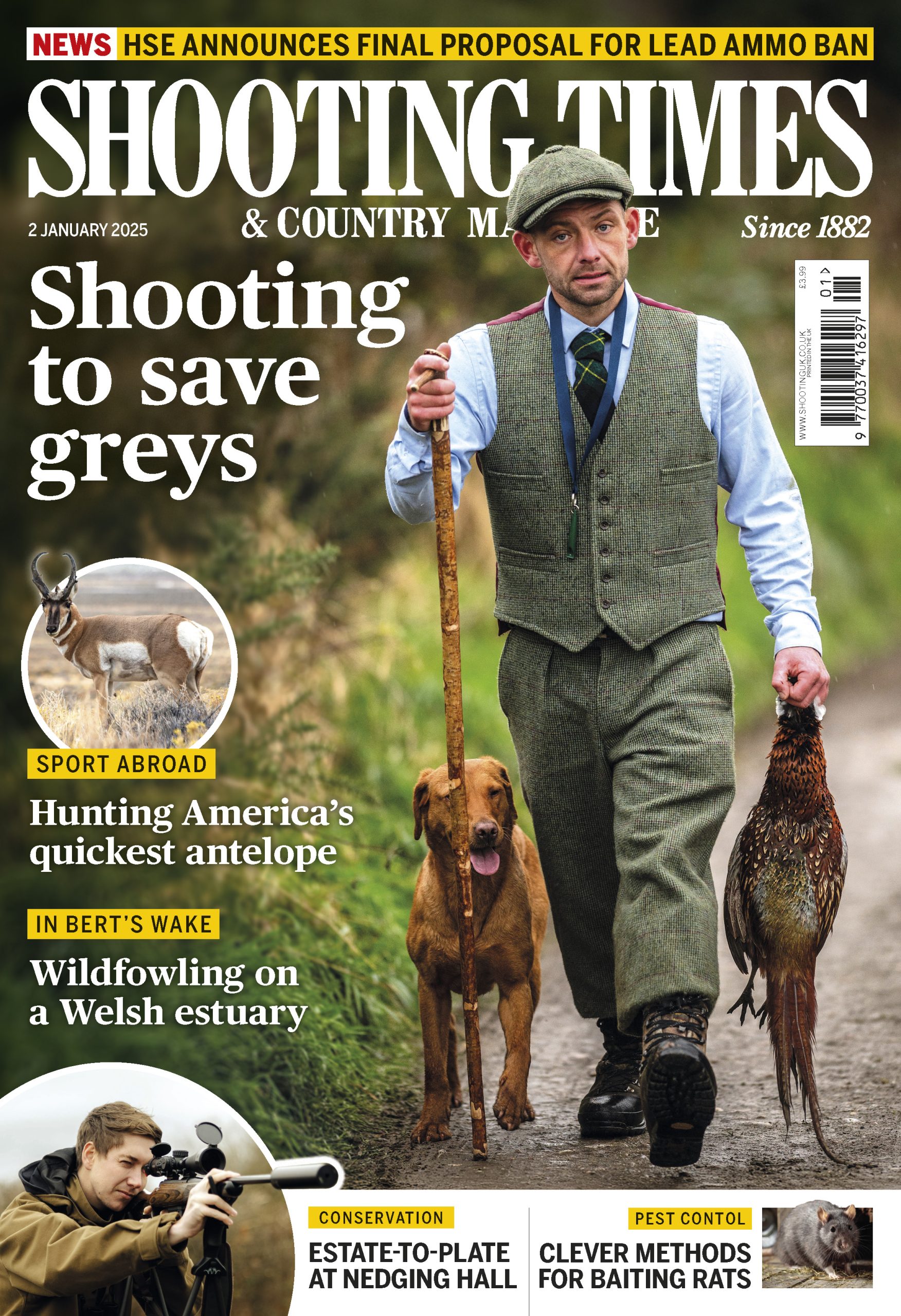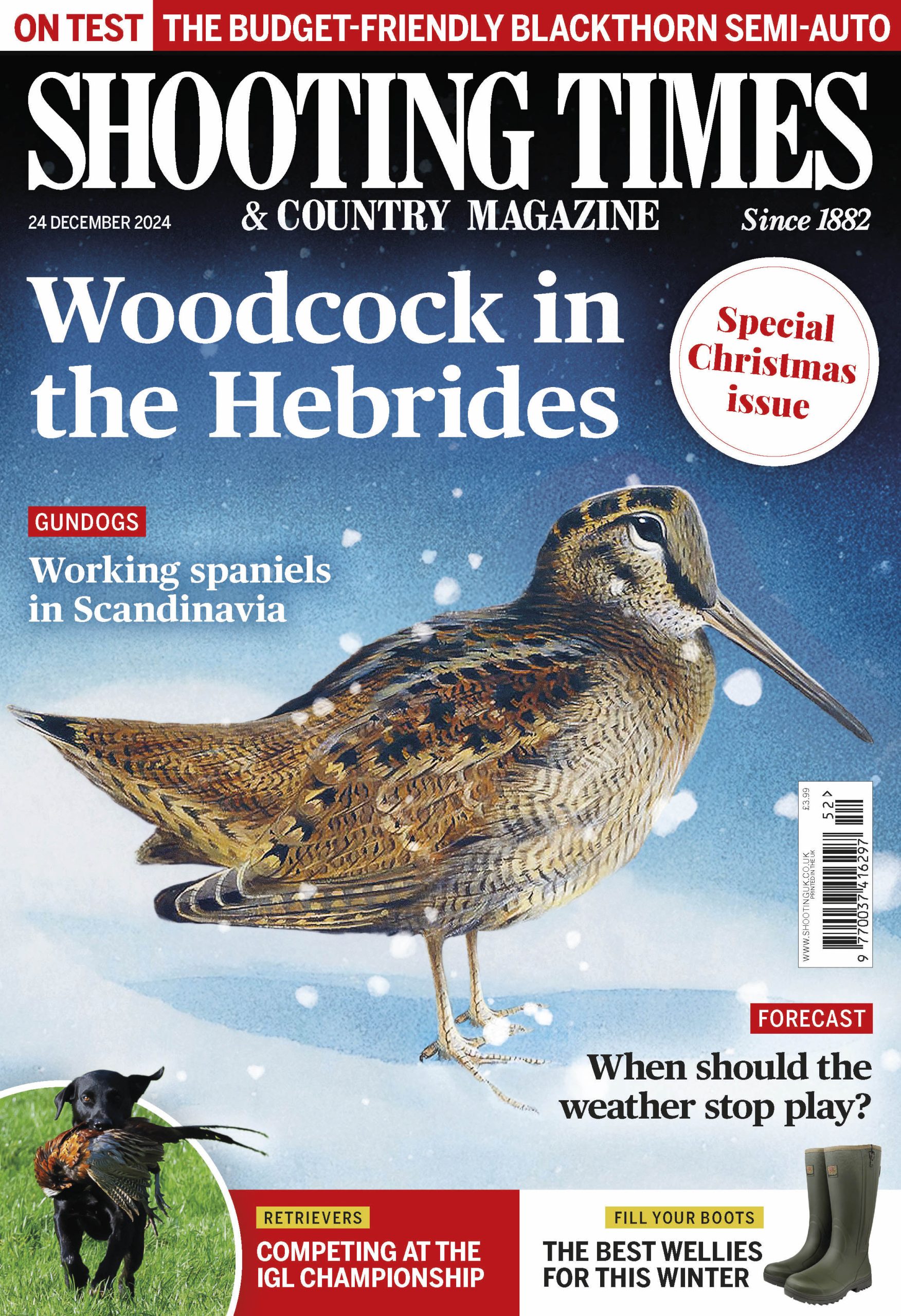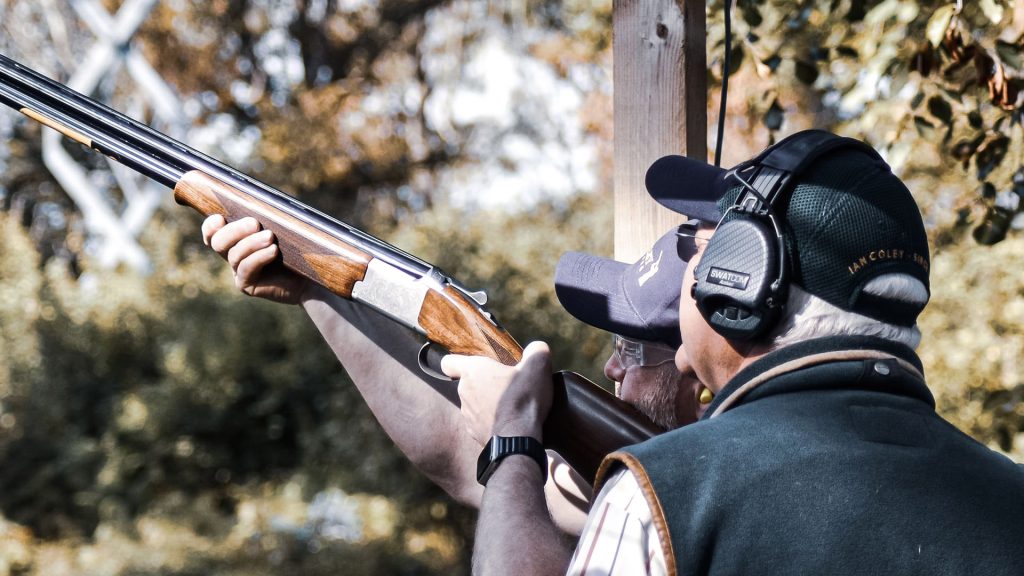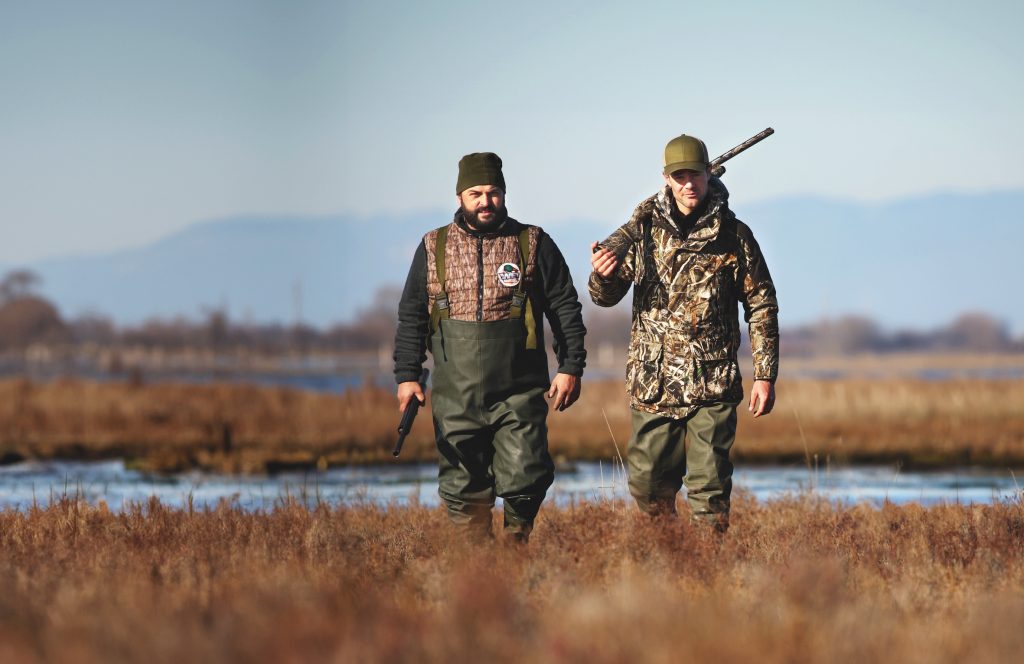Win CENS ProFlex DX5 earplugs worth £1,149 – enter here
High birds – you must know your limits
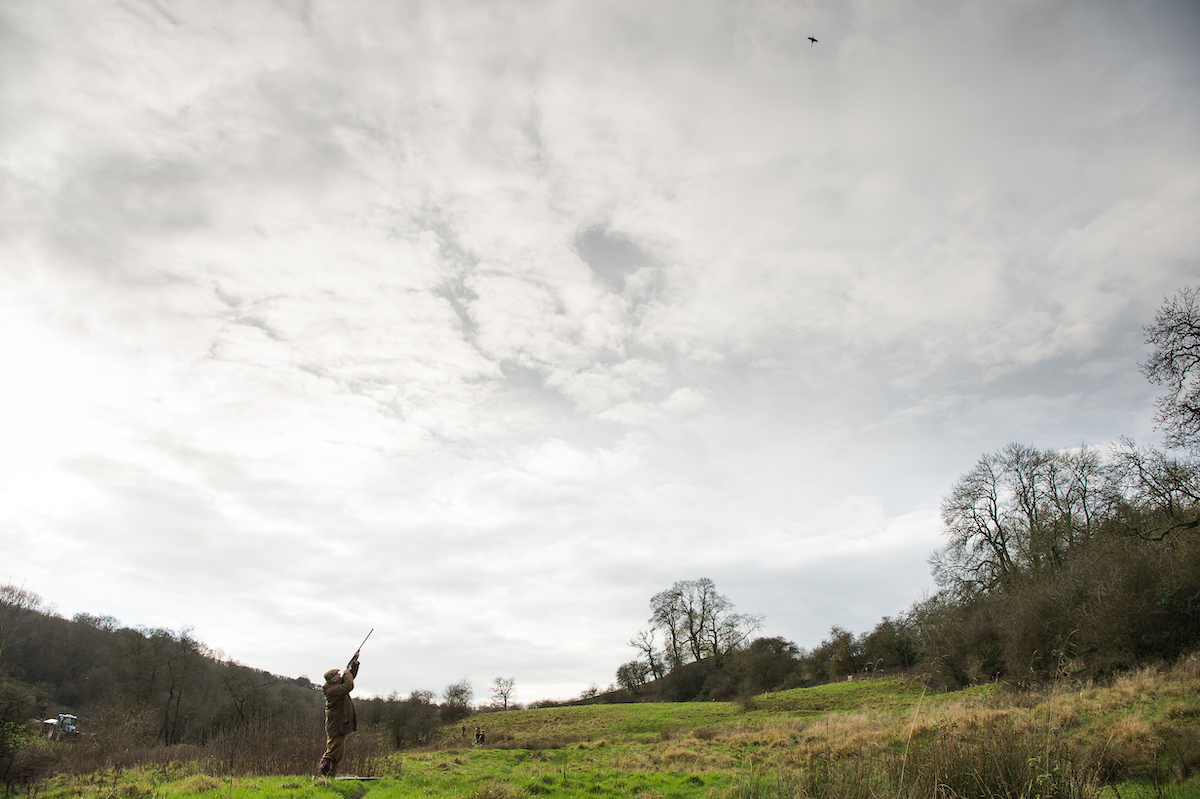 gun shooting high bird
Usd 14 march 18 catlow high bird
gun shooting high bird
Usd 14 march 18 catlow high bird
Judging high birds
I was the lowest Gun, at number four peg, in a valley bottom in the Bowland Fells, with the beaters converging high up and flushing the last few birds from a bracken bank. Throughout the drive, the pheasants had split before me, going to my right or left, and making very testing shooting for the rest of the line. But then one last hen decided to be more adventurous, climbing out towards me before turning to my right when straight overhead.
Judging it to be too high, I did not even lift the gun. My friend Ian Grindy, who was picking up behind, came to me after the whistle was blown and said: “What was up with that hen, Mike? Too good for you?”
I replied that the next morning we were planning to try for geese over decoys and asked: “What will you think of me if I go for a pinkfoot that far up?” I asked.
Ian agreed that I had a point, and that trying to fluke a silly high pheasant was no more sporting than risking wounding a high goose.
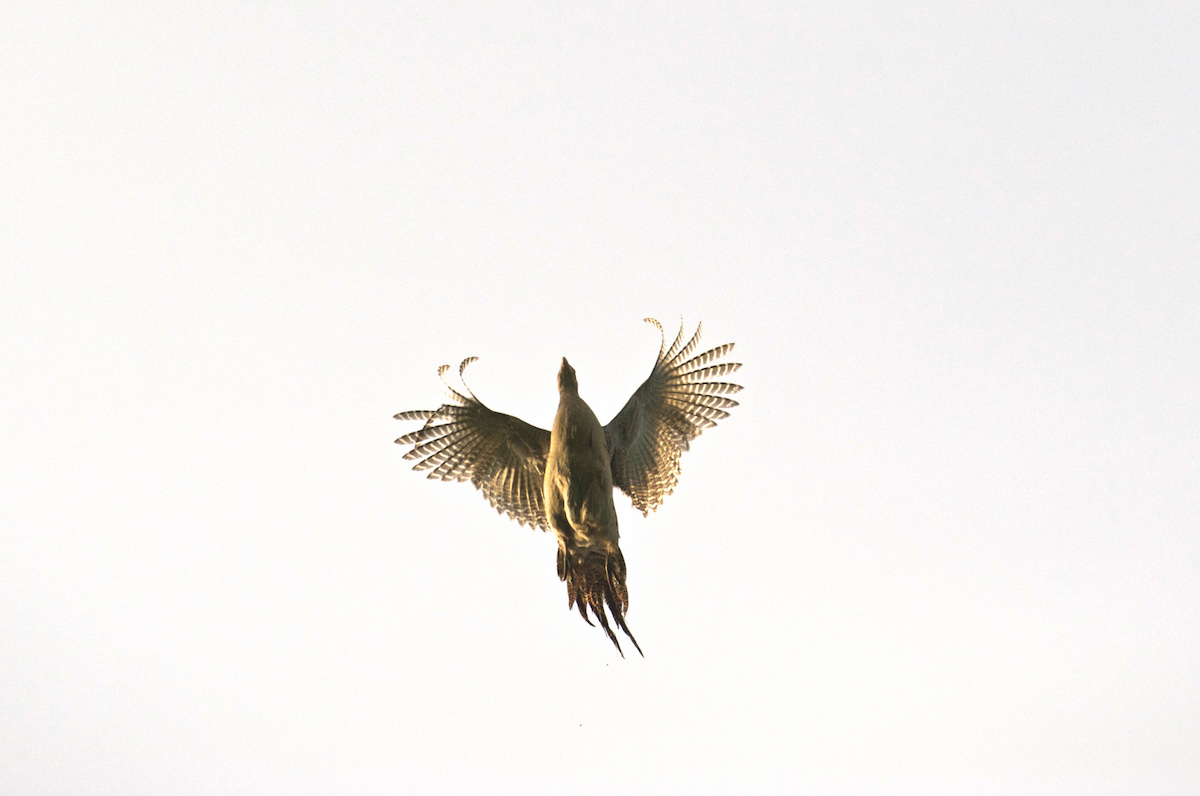
Hen pheasants are often easier to kill than long cock birds as they are softer
With my wildfowling apprenticeship, I have always been conscious of the need to be properly in range of a bird before you shoot, and my father’s cry of “let them come!” still rings in my ears every time I am tempted to try something a little more adventurous. (Read expert tips on shooting high pheasants.)
If you want to pull off a right-and-left at ducks over decoys, with both lying dead in the water, you had better wait until they are well inside 30 yards before you make your move. The moment you start mounting your gun, they will spot you and flare. By the time you fire the second shot, they will be 10 yards further away.
Pheasants and redlegs will not flare in the way wildfowl and pigeons do, so waiting until they are too close is unsporting, if only because of potential carcass damage. So I have no hesitation going for a high pheasant or partridge that I judge to be within 40 yards; if it is lower, I try to take it out in front, rather than smash it.
The point of these two different approaches is the same. In both cases I am after a clean kill with minimum damage to a bird that is destined to be eaten. That surely should be the mark of a true sportsman; anything too close should be passed up or allowed to get a bit further away, and anything beyond reliable range should be left. (Read how to reduce the risk of pricking birds)
“I wanted it to feel involved in the day’s proceedings,” joked a mate after popping at an impossible pigeon. Is this a common trait among game shooters? When a high pigeon tumbles out of the sky, there is a loud cheer, so we are encouraged to have a go. Part of the story here is that on most driven shoots any gamebird that flies over your peg is likely to be in range. So it is easy to feel a pigeon above you is yours to try for, even though it may be far higher than a pheasant or partridge can fly.
Kills-to-cartridges ratios are often quoted as a measure of drive quality, but is this acceptable? The late Arthur Cadman, who wrote for Shooting Times, was a great sportsman and loved to pursue geese on the foreshore. It was his view that anyone who could not bag a goose for every three shots fired should ask why. “You either need to learn about the range of your gun, or to go to the shooting school and practise,” he’d say.
So what of the shoot manager who proudly boasts that a drive is “one for five”, or seven or perhaps more? We tend to forget that there is no magic cut-off distance with a shotgun where it can no longer wound. But there is a long distance between the maximum reliable range and the point where your pellets bounce off harmlessly. Situations where good shots go into the one-for-five category and beyond are straying into that unreliability zone, where wounding is more likely than a clean kill.
How many times have you heard the words “but I heard the pellets strike…”? The speed of sound being what it is, the bang of the gun masks the sound of pellets striking when a bird is in range; if you can hear the strike afterwards, the target was a long way away, and you have wounded it.
Responsibility
We should all bear these thoughts in mind whenever we go shooting, because the decision to squeeze the trigger is our own responsibility. If we want to abide by the Code of Good Shooting Practice — and surely everyone does — we must stick within our limits. In their briefing, hosts should emphasise that there is no shame in not trying for what you are not comfortable with.
As we get towards the limit of reliable range, what we load our cartridges with becomes more critical. You need pellets that hit hard enough to cause fatal damage and enough of them to ensure a strike to a vital organ. As you try for greater range by choosing bigger pellets, you sacrifice pattern, so reduce the chance of that vital strike.
This applies whatever shot you use, lead or lead-free. Having used steel and bismuth for all my wildfowling for the last 25 years, and at pheasants more recently, I conclude there is very little difference between the three. But I am adamant that the common advice to go up two shot sizes with steel is a mistake because it results in thin patterns. Using Eley VIP steel No 5s where I would normally choose lead No 6s has worked well for me even at high pheasants, because the pellet weights are very similar.
There is an old saying, “if you can see a snipe, it is worth a shot”. This is a reiteration of the fact that big shot can sometimes pull off miracles. I would choose lead No 8s or their equivalent as the optimum shot for a snipe and the pellets in a ‘normal’ load of lead 5s or steel 4s would have the energy to kill it, or break a wing at well over 50 yards.
The trouble is this relies on a lucky, ‘golden’ pellet hitting the vital spot, but for every bird dropped there will be several that have a pellet or two driven deeply into them, probably to cause a lingering death. We need to learn our limits and avoid relying on golden pellet syndrome at all costs.
Loads of choice
Eley Hawk VIP Steel Pro Eco
With a fully biodegradable and dissolvable wad that will leave no trace in the environment, these 12-bore steel cartridges have been ‘rigorously tested’ for ballistic confidence and are available in 32g No 3 and 5 shot. (Read our full review of the Eley Hawk VIP Steel Pro Eco here.)
Hull Cartridge High Pheasant Extreme Hydro
Now featuring HydroWad — the 100% plastic-free biodegradable wadding system — this 12-bore high bird cartridge, available in both steel and lead 32g and 34g loads, continues to offer tight patterns and clean kills.
Gamebore Super Game High Bird
Gamebore’s most competitively priced game cartridge, this load comes in both fibre and plastic wad options. Loaded in a 2½in case, the 12-bore option features Gamebore’s high-quality lead shot for optimum patterns and performance.
Related Articles
Get the latest news delivered direct to your door
Subscribe to Shooting Times & Country
Discover the ultimate companion for field sports enthusiasts with Shooting Times & Country Magazine, the UK’s leading weekly publication that has been at the forefront of shooting culture since 1882. Subscribers gain access to expert tips, comprehensive gear reviews, seasonal advice and a vibrant community of like-minded shooters.
Save on shop price when you subscribe with weekly issues featuring in-depth articles on gundog training, exclusive member offers and access to the digital back issue library. A Shooting Times & Country subscription is more than a magazine, don’t just read about the countryside; immerse yourself in its most authoritative and engaging publication.
